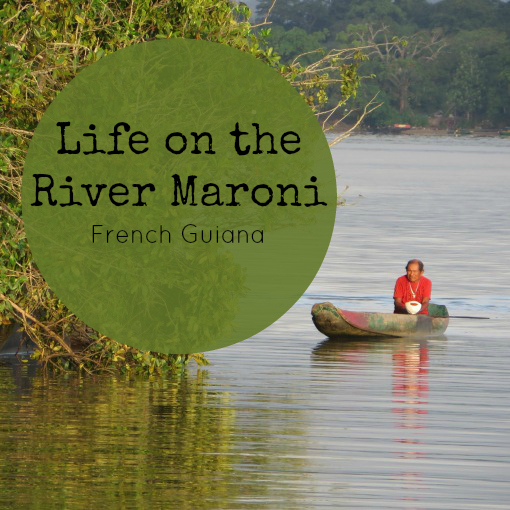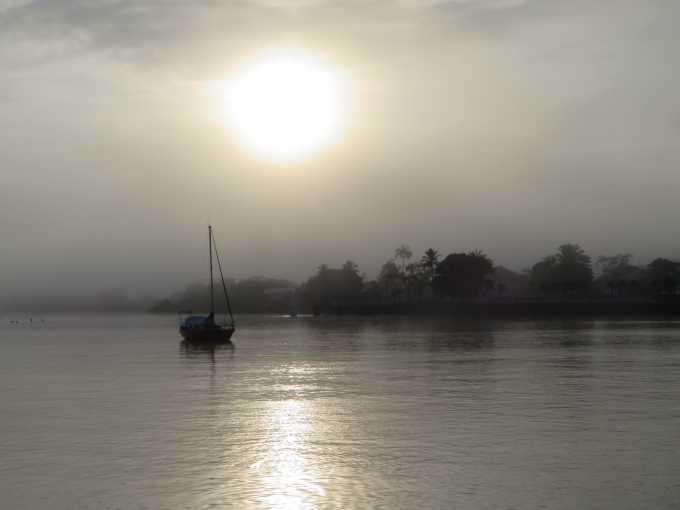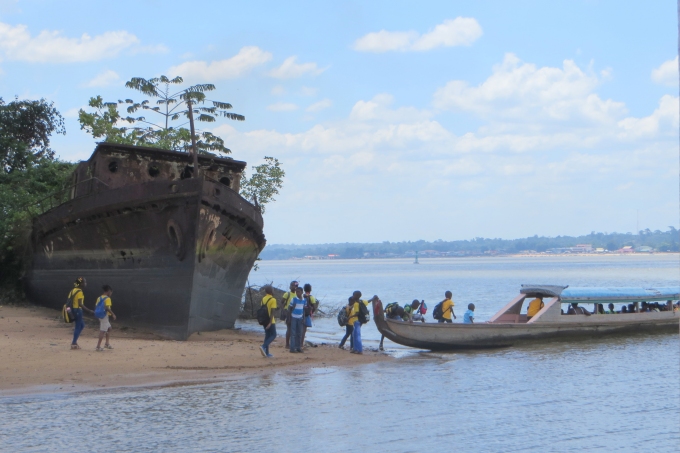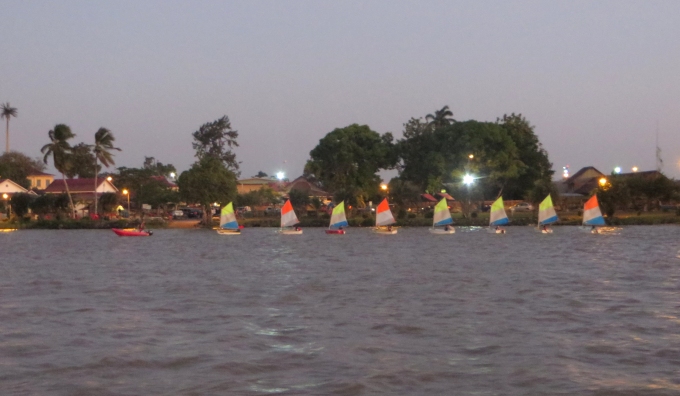“Six thousand convicts locked up in our prisons put a severe strain on our budget, decaying steadily day by day, and constantly threatening society. It seems to me that we can make hard labour more effective, less moralistic, less expensive, and above all, more humane by using it to develop French colonies.” So spoke Louis Napoleon Bonaparte in 1850 in a public speech. The first deportation of prisoners from France to French Guiana began in 1852, just two years following his speech.

The day threatened rain ...no painting, no varnishing aboard Nine of Cups...a good day to visit Le Camp. We bought our tickets at the Office de Tourisme (€6/pp) and requested an English-speaking guide. British cruisers, Chris and Karen, new arrivals on s/y Moontide, joined us. “Meet your guide in Le Camp under the guava tree”, the tourism lady told us. It was an odd feeling passing through the arched gate and into the prison grounds, knowing that 70,000 convicts has passed through this same portal throughout a century under much different circumstances. Ronnie, our guide, joined us promptly at 1100.

Shaped as a huge rectangle, Le Camp was built by and for convicts. Saint-Laurent was chosen because of its isolated location up the Maroni River surrounded by dense and hostile jungle. The chances of escape were minimal. The town was nothing more than a small village inhabited by AmerIndian people when the first ship of convicts arrived. Between 1890-1930, Le Camp was constructed with punishment in mind.

We entered the “prison within a prison”, following Ronnie's lead. When he locked the door behind us, we gave each other a raised eyebrow. It was eerie being here. Arriving prisoners who were deemed “hardened”, were kept in block houses, sometimes 80 men to a block. The goal was to break their bodies and their spirit. They laid on concrete slabs, shoulder to shoulder, their legs secured to iron “justice bars”. Here they lay for 20-22 hours per day for days, sometimes weeks at a time … sweating, vomiting, soiling themselves, unable to move.

Another section of the prison housed “relegues”. These were vagabonds, vagrants, homeless or petty thieves that France sent along with other criminals just to be rid of them. The rule here was that after you served your sentence, you must spend the same amount of time in the colony working as a “free” man. If your sentence was less than seven years, you could return to France. However, the cost of passage on a ship returning to France was prohibitive. Few could ever return. If your sentence was more than seven years, you could never return to France.

Rules were severe. For instance, the bottom half of all walls including inside the cells was covered in charcoal. If a guard noted any charcoal on a prisoner's clothes, indicating that he had leaned against a wall, he was punished. If a prisoner spoke, he was punished. Punishment ranged from reduced rations to total seclusion in a lightless room for months or even years or to death by whipping or guillotine. Some prisoners opted for death. Death row, “quartier special”, was comprised of 12 cells with clear views of the guillotine area.

One group of prisoners was separated from the other by fences and gates. Fraternization was discouraged. It was every man for himself, and the prison system made it difficult to survive.

We were sweating as we walked across the grassy grounds and stood in the shade of guava trees to listen to Ronnie. He reminded us that there was no grass, no shade, no respite from the sun and heat for prisoners.

Our knowledgeable guide demonstrated one of the punishment methods in a tiny cell. David shackled Ronnie's left ankle to an iron bar. The heavy shackle weighed 2 kg (5 lbs) and it was intentionally attached to the left ankle, so that the prisoner could not reach either the slop bucket nor the drinking water.

Prisoners etched lines on the cell walls ticking off the days spent in solitary confinement. They were, of course, punished for writing on the walls.

Probably the most well-known prisoner to have spent time here was Henri Charriere, aka Papillon. In Cell 47, we could still see his name etched on the floor.

The tour lasted 1-1/2 hours and, as informative as it was, we were glad to leave the prison grounds. Le Camp officially closed in 1946 and Saint-Laurent became just a town along the Maroni River. It wasn't until 1953, however, with the help of the Salvation Army, that the last of the prisoners were repatriated to France. Le Camp seriously deteriorated for the next four decades until it was purchased by the town of Saint-Laurent in 1990 and a revitalization project began. It was declared a national monument in 1994.






















